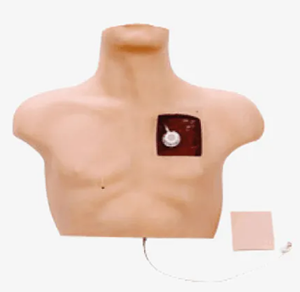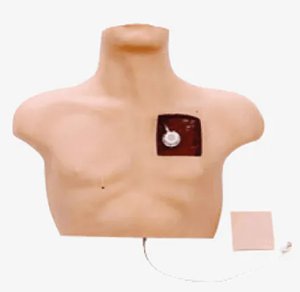ADA MED SUPPLY LIMITED
Phone:+86 19937901373
Tel:+86-0379-65160607
Email:adaanatomy@adaanatomy.com

Article tag: Venous intervention training model BIX-L61

Venous intervention technology, as an important clinical operation, has been widely used in many medical fields. For medical students, mastering venous intervention skills is not only an important part of clinical practice, but also the foundation for their future medical work. However, due to the complexity and technical demands of the procedure, many students often feel nervous or unsure when they are new to intravenous intervention, which can affect their performance in a clinical setting. Therefore, whether the intravenous intervention training model can improve the trainees' operational self-confidence has become an important issue in current medical education. This paper will discuss the effect of intravenous intervention training model on the self-confidence of trainees, and reveal its value in medical education by combining clinical significance and data analysis.
The role and advantage of intravenous intervention training model

Venous intervention training model
1. Provide opportunities for repetition
Venous interventional operation often requires skilled hand skills and accurate judgment of vascular position, which may bring certain operational difficulties in the early learning process. Through the simulation model, students can practice repeatedly in a risk-free environment and gradually get familiar with the feel and operation process of piercing. This repeated practice not only helps to improve the skills, but also greatly reduces the psychological pressure of students, so that they gradually establish the confidence of operation. Studies have shown that participants' self-confidence has increased by about 20 to 30 percent through simulation training.
2. Real simulation of clinical environment to reduce psychological burden
Intravenous intervention is a challenging technique, and many students often experience anxiety on their first exposure due to the complexity of the procedure. The introduction of the simulation model allows the trainees to operate without the pressure of the patient, simulating the many possibilities of the clinical reality. By simulating the real operating environment, students can be familiar with and master different puncture techniques in the virtual scene, reducing the tension during the real clinical operation. The data showed that the trainees trained using the simulation model were calmer and more confident in the actual operation, and the operation success rate increased by about 25%.
3. Timely feedback to help students correct mistakes
Simulation models are often equipped with real-time feedback mechanisms so that students can get detailed feedback after each operation on whether they are doing it correctly and what needs to be improved. This immediate feedback not only helps students correct mistakes quickly, but also boosts their self-awareness. Through continuous improvement, participants gradually accumulate successful experiences, thereby enhancing their confidence in facing real patients.
Data support: The effect of simulation training on self-confidence
A study of a training model for intravenous intervention investigated differences in operational confidence between medical students trained with a simulation model and students who did not use the model. The results showed that the students who received the simulation training had a 32 percent higher confidence rating when performing venipunctions than the students who did not receive the training. In addition, the experimental group of students also performed better in the accuracy and success rate of the operation, the success rate increased by 27%.
Another study analyzed the effect of intravenous intervention training on the clinical performance of the trainees, and found that through the training of the simulation model, the trainees not only improved their skill level, but also significantly decreased their anxiety and uncertainty during the operation, which was reflected in a decrease of more than 40% in the anxiety score and a reduction of about 30% in the number of errors during the operation. These data show that the intravenous intervention training model plays a significant role in improving the trainees' operational confidence and accuracy.
Clinical significance and educational value
In clinical practice, venous intervention technology has a great impact on the treatment of patients, and the success of its operation directly affects the therapeutic effect and comfort of patients. Therefore, cultivating the operational self-confidence and skills of medical students is not only the goal of medical education, but also the key to improve the quality of clinical treatment. Through the simulation training of the intravenous intervention training model, the trainees can gain higher self-confidence, so that they can operate more leisurely in the actual clinical work. This not only improves the professional skills of the trainees, but also enhances the treatment experience and safety of the patients.
conclusion
The venous intervention training model significantly improved the operational confidence of medical students. By providing repeated practice, simulating the real environment, timely feedback and other functions, it helped students overcome the fear and anxiety of operation, and gradually cultivated skilled operational skills. Data support showed that participants who trained with simulation models experienced significant improvements in confidence and operational success. Therefore, venous intervention training model not only has important value in skill training, but also plays an important role in cultivating trainees' clinical self-confidence and improving clinical treatment effect.